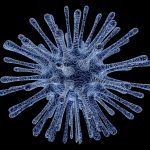
Bayesian Optimization is a technique used in optimization and machine learning to find the optimal set of parameters for a given objective function. It works by iteratively constructing a probabilistic model of the objective function based on observations and then using this model to decide where to sample the next set of parameters.
Applications
The use of Bayesian optimization has come to the fore in recent years because of the need to optimise complex bioprocesses. None more so than cell therapy manufacturing. In product design, Bayesian Optimization (BO) can be employed to optimize various aspects of a product, such as its performance, cost, or user experience.
The process of product design is best summed up in this sequence.
Define the Objective Function
The first step is to define the objective function that represents the goal or metric to be optimized. This could be anything from maximizing product performance to minimizing manufacturing costs or maximizing user satisfaction.
Select the Design Parameters
Next, you need to identify the parameters that can be adjusted or optimized to achieve the objective function. These parameters could include material choices, dimensions, features, configurations, or any other design variables.
Initial Sampling
Bayesian Optimization typically starts with an initial set of samples or experiments to gather data about the objective function. These samples are chosen either randomly or using an initial design based on domain knowledge.
Build a Probabilistic Model
Using the initial samples, a probabilistic model of the objective function is constructed. This model captures the uncertainty associated with the objective function and provides a prediction of the objective value for any given set of parameters.
Optimization and Acquisition Function
Based on the probabilistic model, an acquisition function is defined to determine which set of parameters to evaluate next. The acquisition function balances exploration (sampling in uncertain regions) and exploitation (sampling in regions likely to yield the highest objective value). Common acquisition functions include Expected Improvement (EI), Upper Confidence Bound (UCB), and Probability of Improvement (PI).
Iterative Optimization
The Bayesian Optimization process iterates by sequentially selecting new sets of parameters to evaluate based on the acquisition function, evaluating the objective function at those points, updating the probabilistic model with the new data, and refining the acquisition function.
Convergence
The process continues until a convergence criterion is met, such as a predefined number of iterations or a certain level of improvement in the objective function. At this point, the optimal set of parameters that maximize or minimize the objective function is identified.
It has been shown in ‘in silico’ methods that BO outperforms the state-of-the-art. It requires roughly half the number of experiments compared to other design methods (Claes et al., 2024).
By employing Bayesian Optimization in product design, designers can efficiently explore the design space, discover optimal solutions, and fine-tune product parameters to meet specific objectives while minimizing the number of experiments or simulations needed. This leads to more effective and efficient product development processes.
References
Claes, E., Heck, T., Coddens, K., Sonnaert, M., Schrooten, J., & Verwaeren, J. (2024). Bayesian cell therapy process optimization. Biotechnology and Bioengineering. 121(5) pp. .

Leave a Reply